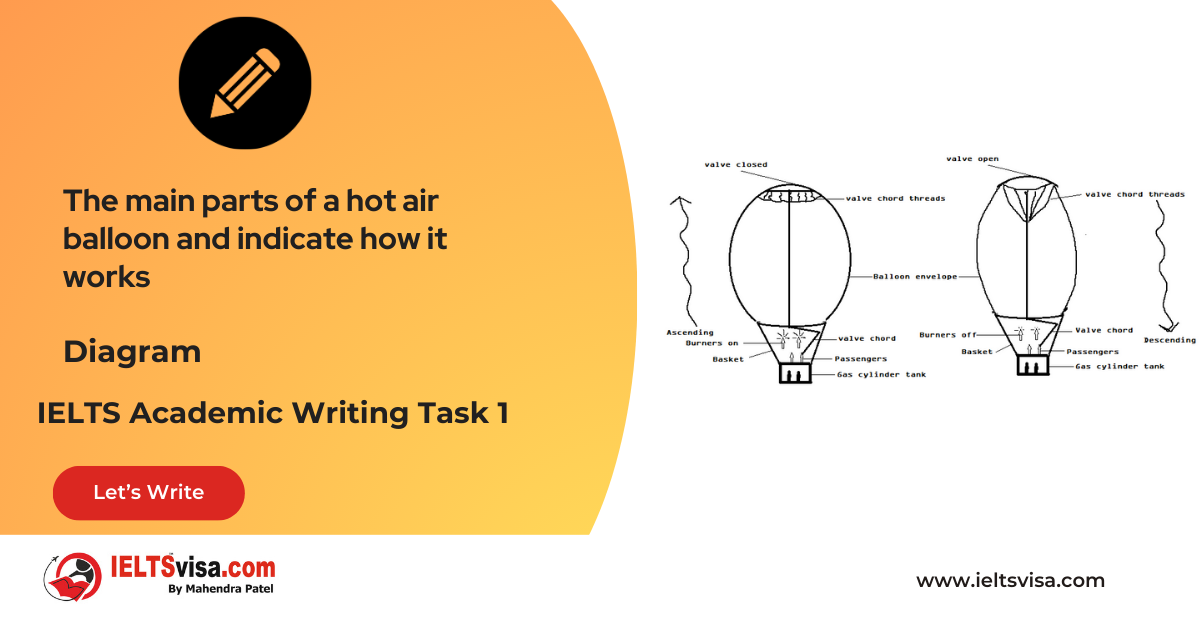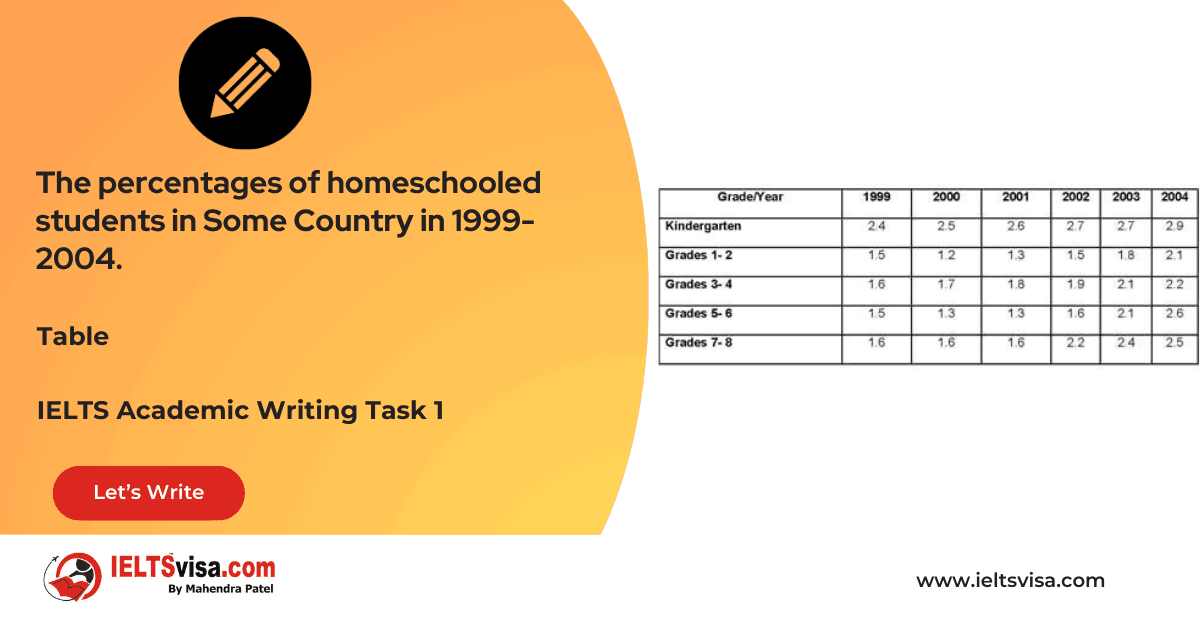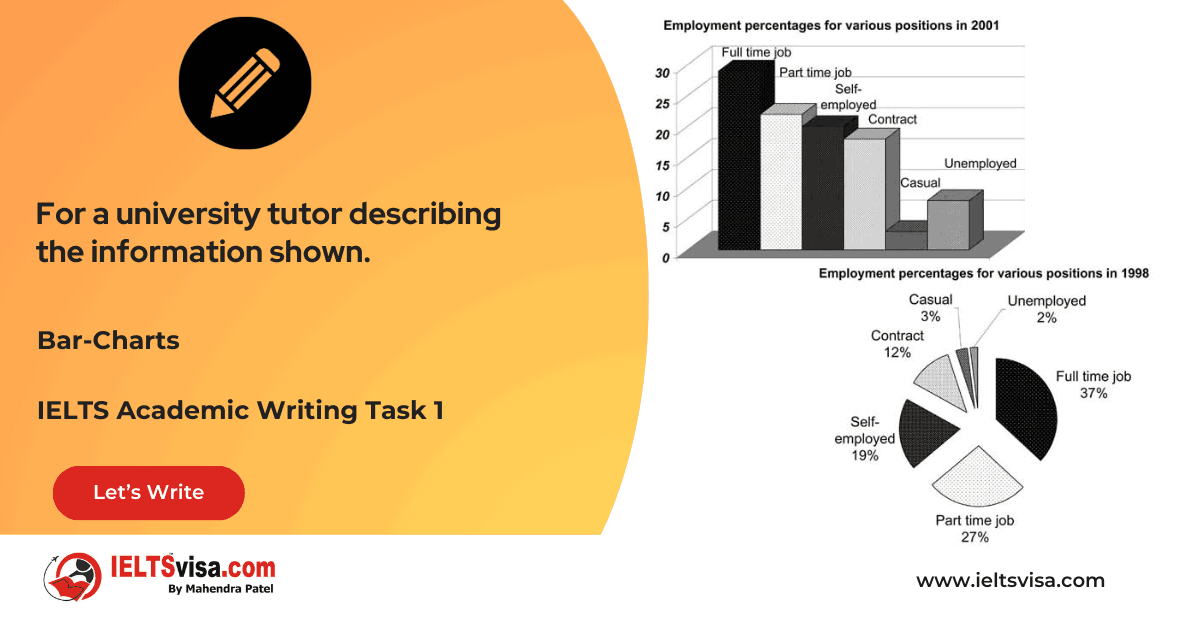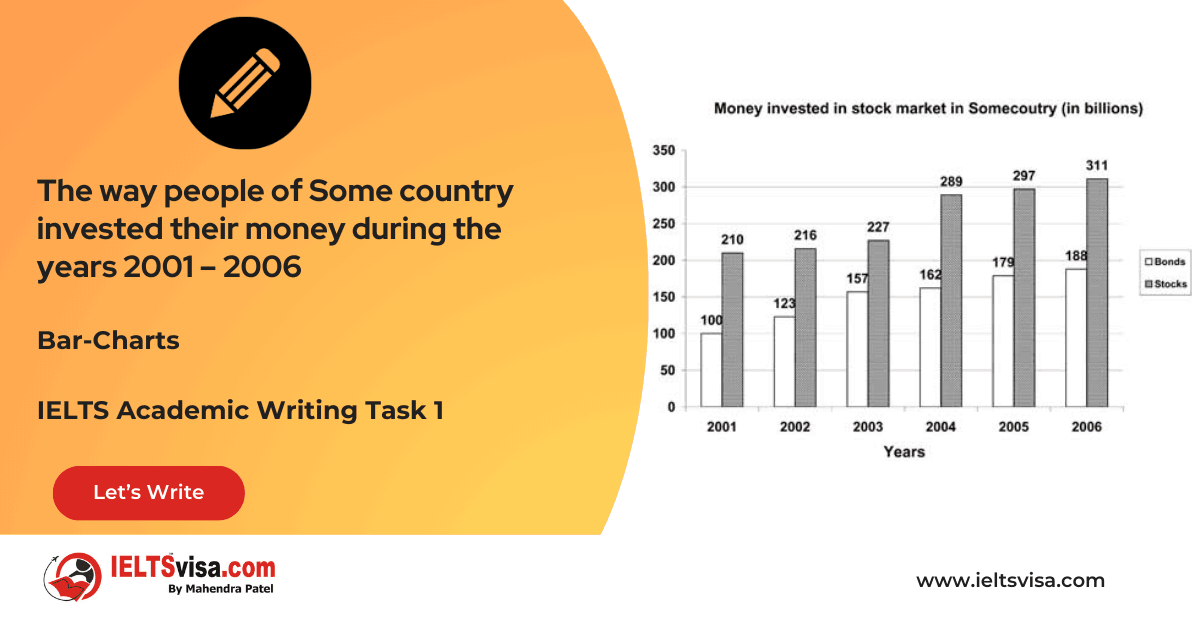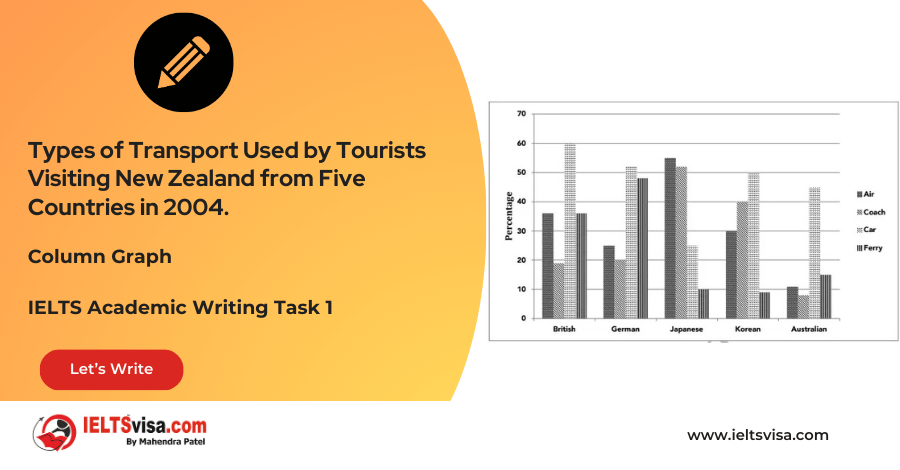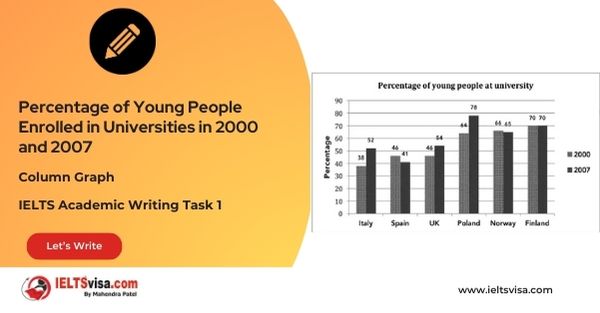Response to a questionnaire given by two groups of people (club members and the general public) who showed their opinions about a new theatre
IELTS Academic Writing Task 1 - Tables
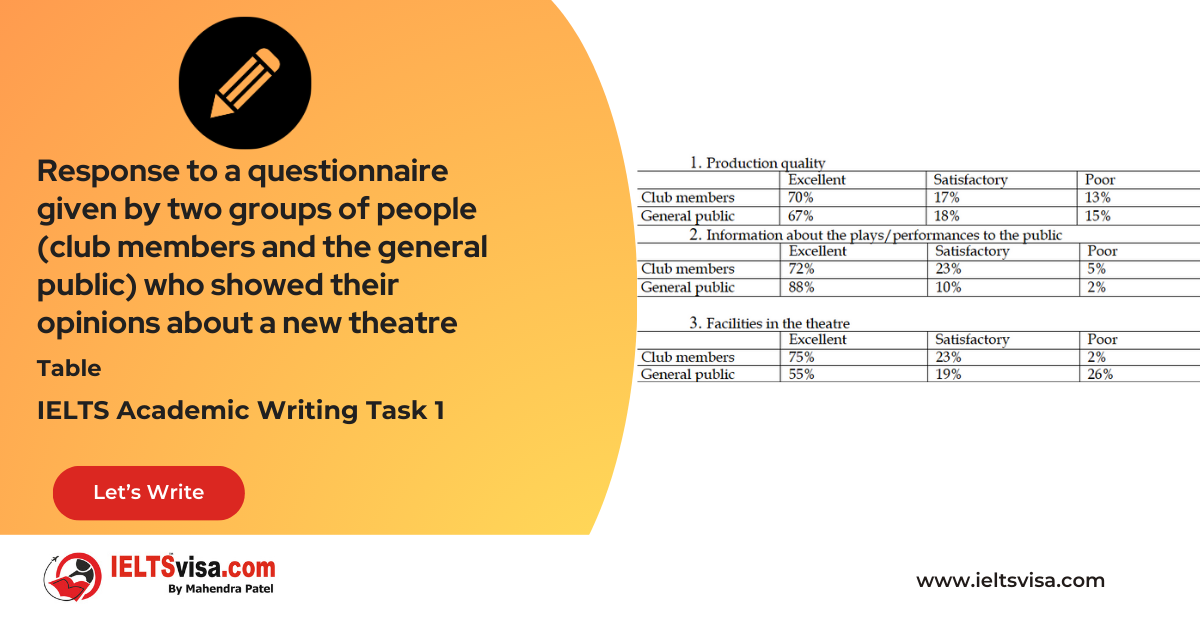
IELTS Writing Task 1 Question
The tables below show response to a questionnaire given by two groups of people (club members and the general public) who showed their opinions about a new theatre. Summarise the information by selecting and reporting the main points and make comparisons where relevant.

Common Questions for the Table
1. Graph Type: Three Tables
2. Title: Opinions of Club Members and General Public on a New Theatre
3. What are the units of measurement?: Percentage of respondents
4. Who: Club members and general public
5. When: Not specified
6. Where: Not specified
7. Topic: Ratings for production quality, information, and facilities of a new theatre
Comparison Showing and Trends Any change over time (such as an increase or a decrease) is a trend.
Comparison 1 : Production Quality
- Details:
1. Excellent: Rated similarly by both groups, with 70% of club members and 67% of the general public.
2. Satisfactory: Received 17% from club members and 18% from the general public.
3. Poor: Slightly higher dissatisfaction from the general public (15%) compared to club members (13%).
Comparison 2 : Information About Performances
-
Details:
1. Excellent: Higher ratings from the general public (88%) compared to club members (72%).
2. Satisfactory: Club members rated it higher (23%) than the general public (10%).
3. Poor: Minimal negative feedback from both groups (5% and 2%).
Sample Answer
The three tables compare the opinions of club members and the general public on the production quality, information about performances, and facilities of a new theatre.
Overall, the majority in both groups rated most aspects as excellent or satisfactory, though the general public expressed higher dissatisfaction with facilities.
Regarding production quality, 70% of club members and 67% of the general public rated it as excellent. A similar proportion of both groups (17% and 18%) found it satisfactory, while slightly more members of the public (15%) rated it as poor compared to club members (13%).
In terms of information about plays and performances, the general public gave higher ratings, with 88% calling it excellent, compared to 72% of club members. Conversely, more club members (23%) rated it as satisfactory compared to 10% of the public. Poor ratings were minimal in both groups (5% club members, 2% public). For theatre facilities, 75% of club members rated them as excellent, significantly higher than 55% of the general public. However, 26% of the public rated facilities as poor, compared to only 2% of club members.
Top 34 Vocabularies
| Vocabulary | Type | Meaning | Synonyms | Examples |
|
Production |
Noun |
The creation or presentation of artistic works |
Performance, Presentation |
The production quality of the theatre was rated highly. |
|
Satisfactory |
Adjective |
Meeting expectations but not exceptional |
Adequate, Acceptable |
23% of the general public found the facilities satisfactory. |
|
Discrepancy |
Noun |
A difference or inconsistency |
Variation, Divergence |
The biggest discrepancy was in the poor ratings for facilities. |
|
Facilities |
Noun |
Buildings, equipment, or services provided for a specific purpose |
Amenities, Resources |
The facilities of the theatre were rated as excellent by club members. |
|
Criterion |
Noun |
A standard by which something is judged |
Standard, Benchmark |
Each criterion received mixed feedback from the respondents. |
|
Dissatisfied |
Adjective |
Unhappy or discontented with something |
Displeased, Unhappy |
A significant proportion of the public were dissatisfied with the facilities. |
|
Proportion |
Noun |
The part or share in relation to the whole |
Fraction, Ratio |
The proportion of poor ratings was higher among the general public. |
|
Opposed |
Adjective |
In contrast or disagreement |
Contrasting, Against |
The club members were more satisfied, as opposed to the general public. |
|
Minority |
Noun |
A smaller number or part |
Few, Subgroup |
Only a small minority rated the production quality as poor. |
|
Divergent |
Adjective |
Differing or deviating |
Contradictory, Varied |
Responses from the two groups were divergent in some criteria. |
|
Assessment |
Noun |
The act of evaluating or judging something |
Evaluation, Appraisal |
“The assessment of facilities differed between the two groups.” |
|
Audience |
Noun |
The group of people who watch or engage with a performance |
Spectators, Viewers |
“The general public represented a larger audience for the theatre.” |
|
Consensus |
Noun |
General agreement among a group |
Agreement, Accord |
“There was a consensus among club members about production quality.” |
|
Aspect |
Noun |
A specific feature or part of something |
Feature, Element |
“The tables highlighted various aspects of the theatre’s performance.” |
|
Feedback |
Noun |
Opinions or responses about a product or service |
Input, Response |
“The feedback on theatre facilities was less favorable from the public.” |
|
Perception |
Noun |
The way something is viewed or interpreted |
Viewpoint, Interpretation |
“The perception of production quality was mostly positive.” |
|
Highlight |
Verb |
To emphasize or bring attention to |
Emphasize, Stress |
“The report highlights the differences in ratings between groups.” |
|
Skepticism |
Noun |
Doubt or hesitation about something |
Doubt, Uncertainty |
“Skepticism about the facilities was more evident among the general public.” |
|
Significant |
Adjective |
Important or noticeable |
Notable, Remarkable |
“A significant proportion of the public rated the facilities as poor.” |
|
Marginal |
Adjective |
Small or minor in scale or importance |
Slight, Minimal |
“There was a marginal difference in production quality ratings.” |
|
Preference |
Noun |
A greater liking for one alternative over another |
Favor, Inclination |
“The club members showed a preference for the production quality.” |
|
Opinion |
Noun |
A belief or judgment about something |
View, Perspective |
“Opinions about theatre facilities varied widely.” |
|
Attribute |
Noun |
A quality or feature regarded as a characteristic |
Trait, Quality |
“The facilities were one of the theatre’s strongest attributes.” |
|
Varied |
Adjective |
Differing in type or degree |
Mixed, Diverse |
“The ratings for facilities varied significantly between groups.” |
|
Critique |
Noun |
A detailed analysis or evaluation |
Analysis, Review |
“The critique of the facilities was harsher from the general public.” |
|
Predominantly |
Adverb |
Mainly or for the most part |
Chiefly, Primarily |
“Predominantly, club members gave higher ratings for all criteria.” |
|
Indicator |
Noun |
A sign or signal showing a state or trend |
Measure, Sign |
“The feedback serves as an indicator of customer satisfaction.” |
|
Notable |
Adjective |
Worthy of attention or notice |
Remarkable, Significant |
“Notable differences were observed in the ratings for facilities.” |
|
Perspective |
Noun |
A particular attitude or way of viewing something |
Viewpoint, Outlook |
“The public’s perspective on the theatre’s facilities was critical.” |
|
Respondent |
Noun |
A person who provides feedback or answers questions |
Participant, Interviewee |
“The respondents included club members and the general public.” |
|
Correlation |
Noun |
A mutual relationship or connection between two things |
Link, Association |
“There was a correlation between age and satisfaction with facilities.” |
|
Deficiency |
Noun |
A lack or shortage of something |
Shortfall, Insufficiency |
“The public noted deficiencies in the theatre’s facilities.” |
|
Skeptical |
Adjective |
Doubtful or uncertain about something |
Doubtful, Hesitant |
“The public was skeptical of the information provided about performances.” |
|
Inferior |
Adjective |
Lower in quality or value |
Substandard, Poor |
“Some respondents considered the facilities to be inferior.” |

Our Books
Master IELTS Speaking Part 1
IELTS Writing Task 1 Book
IELTS Writing Task 2 Book
Writing Task 1 Question Types
Practice IELTS Other Modules
IELTS Listening
The IELTS Listening test assesses how well you can understand spoken English in various contexts. It lasts about 30 minutes and is divided into four sections with a total of 40 questions. The listening tasks become increasingly difficult as the test progresses.
IELTS Academic Reading
The IELTS Academic Reading section assesses your ability to understand and interpret a variety of texts in academic settings. It is designed to evaluate a range of reading skills, including skimming for gist, reading for main ideas, reading for detail, understanding inferences, and recognizing a writer's opinions and arguments.
IELTS Speaking
The IELTS Speaking test assesses your ability to communicate in English on everyday topics. It lasts 11-14 minutes and consists of three parts: introduction, cue card, and a discussion based on the cue card topic.
IELTS General Reading
IELTS General Reading tests your ability to understand and interpret various types of texts. Here are some key areas and types of content you can expect to encounter in the reading section, along with tips for effective preparation.
IELTS Academic Writing Task 1
In IELTS Academic Writing Task 1, you are presented with a visual representation of information, such as graphs, charts, tables, or diagrams, and you are required to summarize, compare, or explain the data in your own words.
IELTS General Writing Task 1
In IELTS General Writing Task 1, you are required to write a letter based on a given situation. The letter can be formal, semi-formal, or informal, depending on the prompt. Here’s a breakdown of the key components to include in your letter
IELTS Academic Writing Task 2
In IELTS Academic Writing Task 2, you are required to write an essay in response to a question or topic. Here’s a guide to help you understand the essential elements of this task
IELTS Exam Tips
To succeed in the IELTS exam, practice regularly, familiarize yourself with the test format, improve your vocabulary, develop time management skills, and take mock tests to build confidence.
Grammer for IELTS
Grammar is the foundation of effective communication in English. Understanding tense usage, subject-verb agreement, and sentence structure enhances clarity and coherence in writing and speaking.
Vocabulary for IELTS
Vocabulary plays a crucial role in the IELTS (International English Language Testing System) exam, especially in the Speaking and Writing sections. Here’s an overview of why vocabulary is important and how it impacts your performance
RECENT IELTS SAMPLES QUESTIONS AND ANSWERS
Task 1 – Diagram – A conference hall built in 1981 and planned for 2020
20:00 Start Pause Stop [df_adh_heading title_infix="IELTS Writing Task 1 Question" use_divider="on"...
Task 1 – Table – The percentages of homeschooled students in Some Country in 1999-2004.
20:00 Start Pause Stop [df_adh_heading title_infix="IELTS Writing Task 1 Question" use_divider="on"...
Task 1 – Table – For a university tutor describing the information shown.
20:00 Start Pause Stop [df_adh_heading title_infix="IELTS Writing Task 1 Question" use_divider="on"...
Task 1 – Bar-Charts – The way people of Some country invested their money during the years 2001 – 2006
20:00 Start Pause Stop [df_adh_heading title_infix="IELTS Writing Task 1 Question" use_divider="on"...
Task 1 – Diagram – Rainwater Harvesting and Conversion to Drinking Water in an Australian Town.
20:00 Start Pause Stop [df_adh_heading title_infix="IELTS Writing Task 1 Question" use_divider="on"...
Task 1 – Column graph – Percentage of Young People Enrolled in Universities in 2000 and 2007.
20:00 Start Pause Stop [df_adh_heading title_infix="IELTS Writing Task 1 Question" use_divider="on"...

